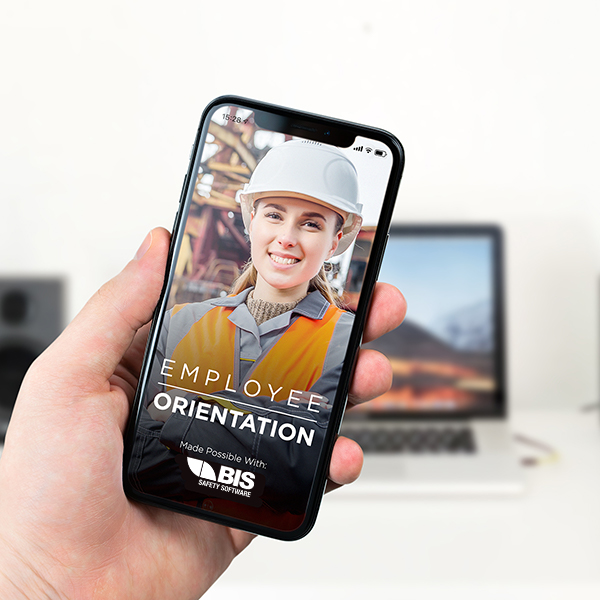
Reduce Training Costs with Online Orientation Software
Study after study has shown that new employees become proficient sooner and stay employed with a company longer if they have successfully completed a well-designed orientation program. How you onboard new hires plays a critical role in both their success as well as the success and bottom line for your organization, as the cost to hire and train workers is high. And online training is playing an increasingly large role.
Organizations started using online training some time ago. Videos have long been a part of orientations, but the vast improvement in technology since the creation of the VHS tape has meant that delivering safety training online is quickly finding its way into every organization. Add to that the recent global health events (I’m looking at you, Covid-19), and it’s not surprising to see an increased urgency for online orientation options.
The reality with onboarding new employees is that it takes time, even if you are good at finding the best people. And as Benjamin Franklin famously wrote, “Remember that time is money”.
Which is how we find ourselves here, discussing ways to reduce the time involved in onboarding new hires, and ultimately reducing the cost of orientations.
Will you save money using Online Orientation software?
Yes. And no. Let’s be clear, setting up a successful online orientation program will require some upfront work, and there will be software costs to be factored in as well. But consider all the elements that go into a typical orientation program: discussions on company policies and culture, specific information regarding the role, job shadowing, outlining the safety protocols that need to be adhered to, and many other components and communications regarding the organization as a whole and particulars of the position.
Many of these roles are time-consuming when completed in person, requiring a staff member to work closely with a new hire. However, when done properly, new staff can get up to speed more quickly and improve their overall performance and job satisfaction when harnessing the power online tools provide.
Here are some key areas where costs could be reduced using an online software program:
- Reduction in paperwork and training record management – information can be collected automatically reducing the cost of administration
- Less staff time and resources required to deliver the training
- Content is reusable and training sessions can be repeated often with no additional cost
- It can be taken from any location, reducing the cost of travel
- Fewer facility costs required – training completed online can be completed from anywhere

Savings will vary from organization to organization, of course. Once you have a program set up, the cost to deliver the online component will be minimal. New employees can begin the training at their own pace, with the ability to pause and review each section as needed. For a small company, it may be hard to see the savings upfront – although, the long term benefits will be the same for small companies as well as larger ones (and the ease of which an orientation program can be launched means every new employee receives consistent instruction in an easy to deploy platform). Medium and large companies could see significant savings quickly after implementation.
Online Orientation vs. Classroom Orientation
Does that mean online orientation is the best option for you? It may be, or it may be more likely that you need to offer a combination of both. There are instances where in-person training cannot be replaced. Learning to operate machinery will eventually require a hands-on approach. Training on a software system, however, can be more easily delivered with video and online tutorials.
Let’s quickly compare the strengths and weaknesses of each type of training method:
In Class Training
- Can be slower, more time consuming, and more expensive
- Delivered with more personal interaction and the ability to ask and answer questions more easily.
- Increased interaction between employees, which can lead to increased morale
- Questions asked by one person are explained to everyone – enhanced group learning
- Training is often a one-size-fits-all model when onboarding large groups of employees. That makes customizing the training option more difficult for individual employees.
- Participants need to be gathered into a central location(s)
- Training is offered at set times.
- Health restrictions or regulations may prevent large groups from gathering together
- Travel time should be factored in
Online Training
- Much greater flexibility for when the course can be completed
- Content is reusable
- Physical location is not a barrier when taking training – you can be anywhere
- Reduced paperwork when online training is used together with a learning management system that keeps track of individual training records
- Learning can be automated, saving administrative time and making records easier to locate
- Easily assign courses to new hires
- No need to coordinate timing with large groups of employees or trainers
- Minimal in-person employee interaction
- Training can be customized for each employee by adding specific courses relevant to them
Each method of training has its benefits. Employing a hybrid orientation process allows you to take the best of each option and create an incredibly successful program.
Plan for the Future with Online Orientation Software
We rely on technology more and more in our daily lives and embracing technology in the workplace has led to some incredible efficiencies…and it can do the same for onboarding and orientations for new employees. Culture and staff connection is and should remain a significant part of any corporate hiring and team-building strategy, and should not be overlooked.
Yet there are significant advantages to utilizing online tools for training. And the results include faster training turnaround, more convenient times for delivery, and a much simpler mode of deployment. The use of videos and other automated products can increase the quality and consistency of the messaging, and the on-demand nature is often preferred for many new employees. And of course, being able to monitor the training of each employee reduces the administration and paperwork required to manage these programs, which is a big win for any HR or safety manager.
Using technology to improve the way we work, especially when it includes both time and cost savings, is a great way to improve the efficiency of your organization. Online orientation software may be just the thing you need to lower your onboarding costs while simultaneously improving the effectiveness of your programming.






























